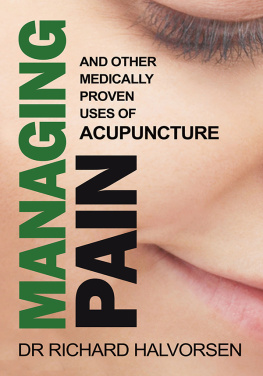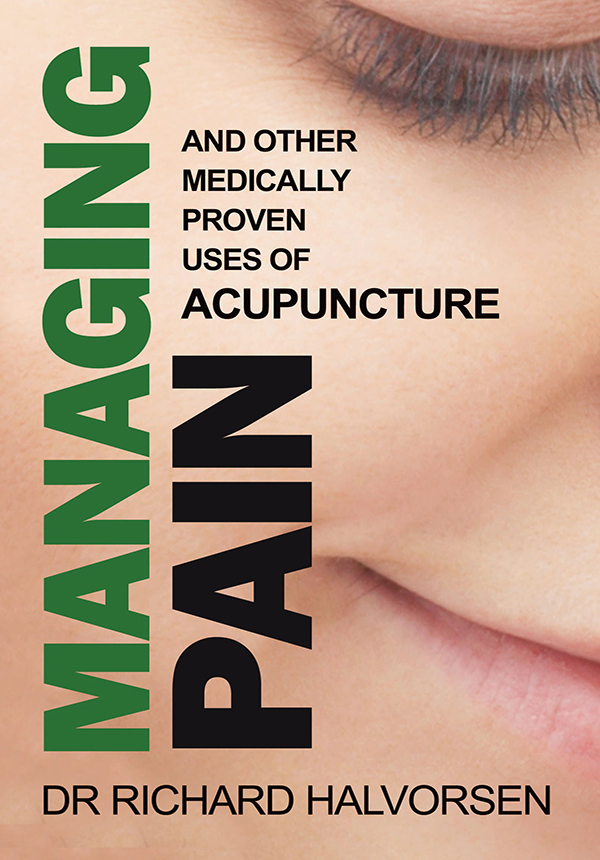Introduction
When I was training to be a doctor in London in the 1980s we were not taught anything about acupuncture. There was no mention of it during my five years of study, except possibly the odd aside by a consultant who mocked a patient for being so silly as to seek some acupuncture before coming round to their senses and seeing a proper doctor. We were not informed about any of the so-called complementary or alternative therapies. Acupuncture, along with all the others, was considered unscientific and mysterious and not something with which serious doctors should be dabbling.
However, as a medical student, and then a junior hospital doctor, I frequently and repeatedly saw patients suffering from chronic medical conditions for whom our proper scientific medicine had little to offer.
Western medicine did not have all the answers, and I wondered whether other systems of medicine might be able to fill in some of the gaps. Soon after finishing my medical studies I embarked on a two year course in Traditional Chinese Acupuncture at the British College of Acupuncture (which sadly no longer exists) in London.
Traditional Chinese Medicine (TCM) is based on a completely different system of medicine from the one I had been taught in medical school. I started by trying to relate what I was being taught to what I had learnt at medical school. In TCM there is talk of the kidney, the liver and the heart; at least I knew, or thought I knew, what these were. I assumed a kidney was the same kidney and a liver was the same liver in any system.
Wrong. In modern medicine the kidneys are seen as organs that filter the blood, preserving the chemical balance of the blood and producing urine. In TCM the kidneys are believed to store the bodys Essence; amongst other functions they produce marrow and manufacture blood. This is complete nonsense to a Western trained doctor and so six months into my course I was feeling totally confused. Then the penny dropped. I would no longer think of a TCM kidney as being the same thing as a Western medical kidney. I realized that they were completely different concepts, similar only in that they share a common name.
I no longer believed literally what I was being taught (I knew that the kidneys didnt really manufacture blood) but saw this way of explaining the body as a template on which to devise a traditional Chinese treatment. The important thing to me, as a clinician, was whether the treatment worked; I was less concerned about the theoretical foundation on which that treatment was based.
During, and after, my course I was able to see acupuncture being used in practice and saw with my own eyes that it often, though not always, did work and sometimes even relieved people from distressing symptoms that orthodox Western medicine, the one I had studied in medical school, hadnt been able to help.
In subsequent years I continued to study both traditional Chinese and Western medical acupuncture in the UK and China. I have also received acupuncture myself for various problems over the years.
A lot has changed during my time in practice over the last 30 years. In the early years my practice of acupuncture was received, at best, with baffled amusement and, at worst, with strong condemnation. Now thousands of doctors have received training in acupuncture and many use it as part of their daily practice. I receive frequent referrals from both consultants and GPs, something that did not happen not too long ago. Acupuncture is increasingly used by GPs themselves, or provided by other members of the primary health care team, such as physiotherapists or nurses.
Acupuncture is now one of the most popular of all complementary therapies. Over one million people in Great Britain and nearly two million Australians (over nine per cent of the adult population) use acupuncture every year. Nearly twenty million people in the USA have used acupuncture at one time or another. Though it is still not easy for most people to obtain acupuncture treatment on the NHS, it is widely available privately. But finding an experienced and competent acupuncturist is a minefield as anyone, even with little or no training or qualifications, can legally call themselves an acupuncturist.
I set out to make this the first book that looks at acupuncture from both a Western and Chinese perspective, rather than favouring just one of them. I seek to explain our understanding of how acupuncture works, both from a traditional Chinese viewpoint and from a modern Western scientific perspective.
I have also pulled together all the up-to-date medical evidence and merged this with my extensive clinical experience to give the most comprehensive, yet easy to use, guide to what acupuncture can effectively treat. I find that most acupuncture resources either make claims that acupuncture can treat virtually everything (clearly not the case) or, by applying an overzealous scientific approach, conclude that acupuncture is no more than a placebo (again not so and contradicting much research).
By amalgamating the science with clinical experience I believe this book is the first to bridge the divide between Western and Chinese approaches to acupuncture to provide a balanced overview of the benefits of acupuncture. This book is, in particular, aimed at those with little or no knowledge of acupuncture and to assist those who may be thinking of seeking acupuncture treatment, but will hopefully also be of use to the practitioners of either perspective.
There has been an increasing amount of research into acupuncture over recent decades and we are now beginning to understand how it works and the many ways it can affect the body from a scientific perspective. More importantly, from a practical standpoint, we are learning which conditions are most likely to be helped by acupuncture and which problems would be better treated with other approaches. Research, and scientific evidence, is extremely important but this needs to be used alongside clinical experience. I have been using acupuncture to treat my patients for over a quarter of a century and have seen what it can and cant do with my own eyes. I never cease to be amazed when people, who have already been to see several specialists without benefit, are quite quickly and dramatically helped by acupuncture. Of course acupuncture is not a miracle cure and not everyone, or all conditions, can be successfully treated with acupuncture.





